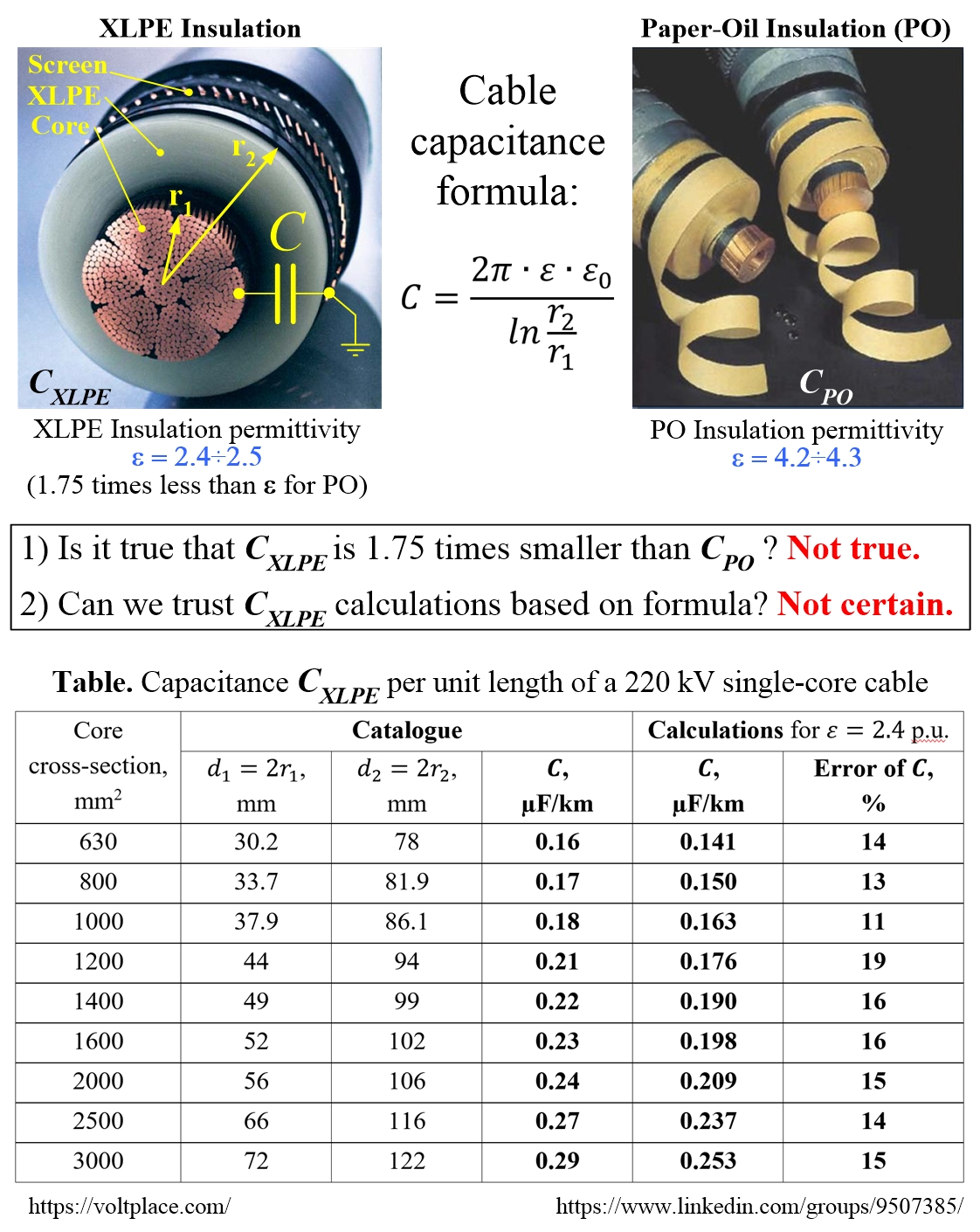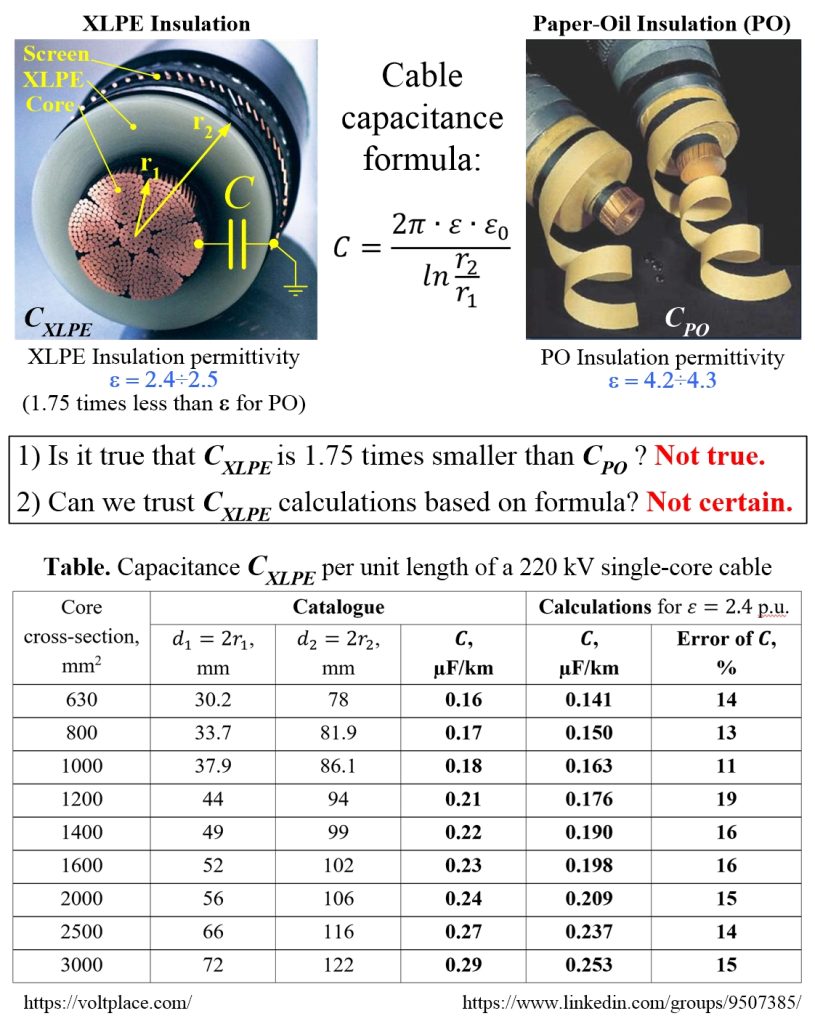
Cable capacitance is able to surprise
The electrical capacitance of cables directly affects the arrangement of medium-voltage 6-35 kV networks with an isolated neutral, as well as issues of reactive power compensation of 110-500 kV networks. Let’s talk about what kind of capacitance the modern cables have.
THE FIRST.
When cables with cross-linked polyethylene (XLPE) insulation appeared, we were told that these cables have a lot of advantages over the old cables with paper-oil (PO) insulation. One of these advantages was called the small dielectric permittivity of polyethylene – only 2.4 (versus 4.2 for paper cables).
Looking at the standard formula for calculating the cable capacitance, it suggests that if the permittivity of polyethylene is 1.75 times less than of paper (4.2/2.4=1.75), then the capacitance C of the XLPE insulated cable will also be 1.75 times less than that of PO insulated cable. Unfortunately, this conclusion, although it seems obvious, is actually deceptive.
In fact, the insulation capacitance of the cable depends on three factors:
✅Insulation permittivity;
✅Core cross-section (radius r1);
✅Insulation thickness (difference of radii r2 and r1).
The total consideration of all three listed factors will surprise. The capacitance of XLPE insulated cable is not less than that of PO insulated, but several times more! Why is that? It is very simple – in calculating the capacitance, not only the permittivity of the insulation is important, but also the radii r1 and r2, which in modern cables differ significantly from the old ones. And those who praised cables with XLPE insulation and low permittivity of polyethylene were in no hurry to talk about it.

THE SECOND.
In the cable catalogue, for each voltage class, depending on the cross-section of the cable core, the following are given:
✅Radius r1 (diameter d1);
✅Radius r2 (diameter d2);
✅Cable capacitance (obtained by direct factory measurements of capacitance on cable drums).
If we try to obtain this capacitance C according to our well-known formula, using the permittivity of XLPE (2.4 p.u.) and the radii r1 and r2 stated in the catalogue, then the cable capacitance obtained during such calculations will be 15-20% less than indicated in the factory catalogue.
What is the reason for this difference of 15-20%, I do not know. Also, I do not know which of the two capacitances is correct:
1) Specified in the catalogue (factory measurements);
2) Calculated according to the formula based on cable geometry (r1 and r2) given in the catalogue.
If the capacitance of the cable network can vary by 15-20%, then this means a significant error when choosing:
✅Peterson’s reactors in the neutral of the 6-35 kV network;
✅Shunt reactors to compensate for reactive power of the 110-500 kV cables.
CONCLUSION
The more we know, the more we have to learn.
